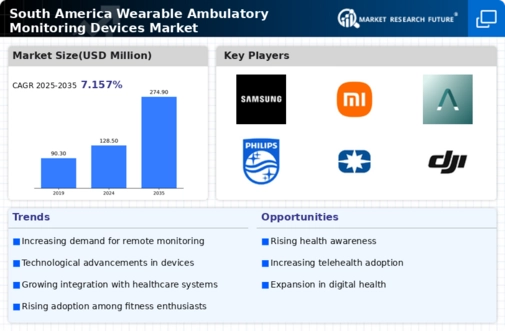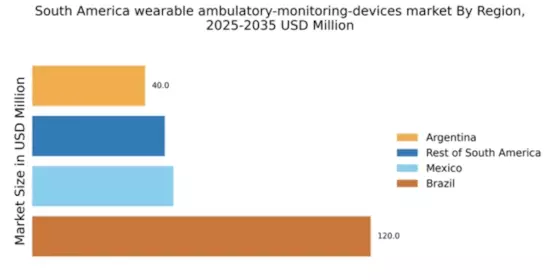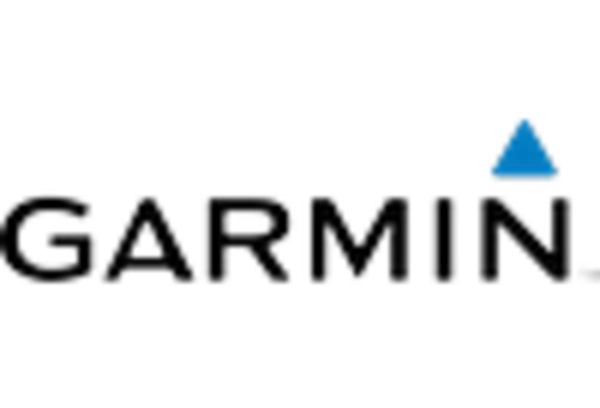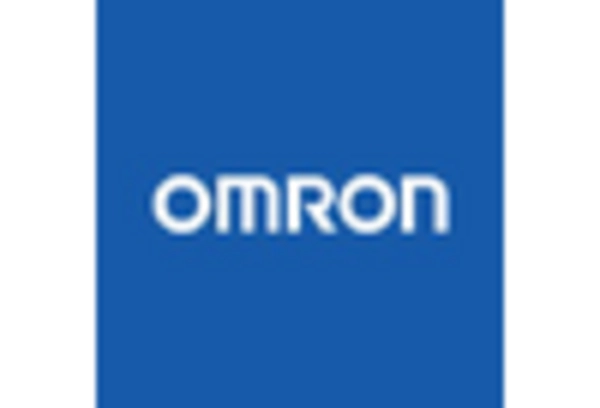Supportive Regulatory Framework
The establishment of a supportive regulatory framework in South America is fostering growth in the wearable ambulatory-monitoring-devices market. Governments are increasingly recognizing the importance of digital health solutions and are implementing policies that encourage innovation and investment in this sector. Regulatory bodies are streamlining approval processes for wearable devices, making it easier for companies to bring new products to market. This supportive environment is likely to attract both local and international players, enhancing competition and driving technological advancements. As a result, the market is expected to expand, with an anticipated growth rate of 12% annually over the next five years, reflecting the positive impact of regulatory support on the industry.
Increasing Chronic Disease Prevalence
The rising incidence of chronic diseases in South America is a pivotal driver for the wearable ambulatory-monitoring-devices market. Conditions such as diabetes, hypertension, and cardiovascular diseases are becoming more prevalent, necessitating continuous health monitoring. According to health statistics, approximately 30% of the adult population in South America suffers from at least one chronic condition. This trend compels healthcare providers and patients to seek innovative solutions for real-time health tracking. Wearable devices offer a practical approach to managing these diseases, allowing for timely interventions and personalized care. As the population ages and lifestyle-related health issues escalate, the demand for wearable ambulatory-monitoring-devices is expected to grow significantly, potentially reaching a market value of $2 billion by 2027.
Technological Integration in Healthcare
The integration of advanced technologies into healthcare systems is a significant driver for the wearable ambulatory-monitoring-devices market in South America. Innovations such as artificial intelligence, machine learning, and big data analytics are enhancing the functionality of wearable devices. These technologies enable more accurate health monitoring and data analysis, leading to improved patient outcomes. For instance, AI algorithms can predict potential health issues based on real-time data collected from wearables. As healthcare providers increasingly adopt these technologies, the demand for sophisticated wearable devices is likely to rise. The market for technologically advanced wearables is expected to account for over 40% of the total wearable ambulatory-monitoring-devices market by 2026.
Growing Awareness of Preventive Healthcare
There is a notable increase in awareness regarding preventive healthcare among the South American population, which is positively influencing the wearable ambulatory-monitoring-devices market. Individuals are becoming more proactive about their health, seeking tools that allow them to monitor vital signs and lifestyle metrics. This shift towards preventive measures is supported by educational campaigns and health initiatives aimed at promoting healthier lifestyles. As a result, the demand for wearables that track physical activity, heart rate, and sleep patterns is on the rise. Market projections suggest that the preventive healthcare segment could represent a substantial portion of the wearable ambulatory-monitoring-devices market, potentially exceeding $1.5 billion by 2028.
Rising Demand for Remote Patient Monitoring
The shift towards remote patient monitoring is transforming the healthcare landscape in South America, thereby driving the wearable ambulatory-monitoring-devices market. With an increasing number of healthcare providers adopting telemedicine, there is a growing need for devices that facilitate remote health assessments. This trend is particularly relevant in rural areas where access to healthcare services is limited. Wearable devices enable patients to monitor their health metrics from home, reducing the need for frequent hospital visits. Market analysis indicates that the remote patient monitoring segment is projected to grow at a CAGR of 15% over the next five years, highlighting the potential for wearable technology to enhance patient care and improve health outcomes.


















Leave a Comment